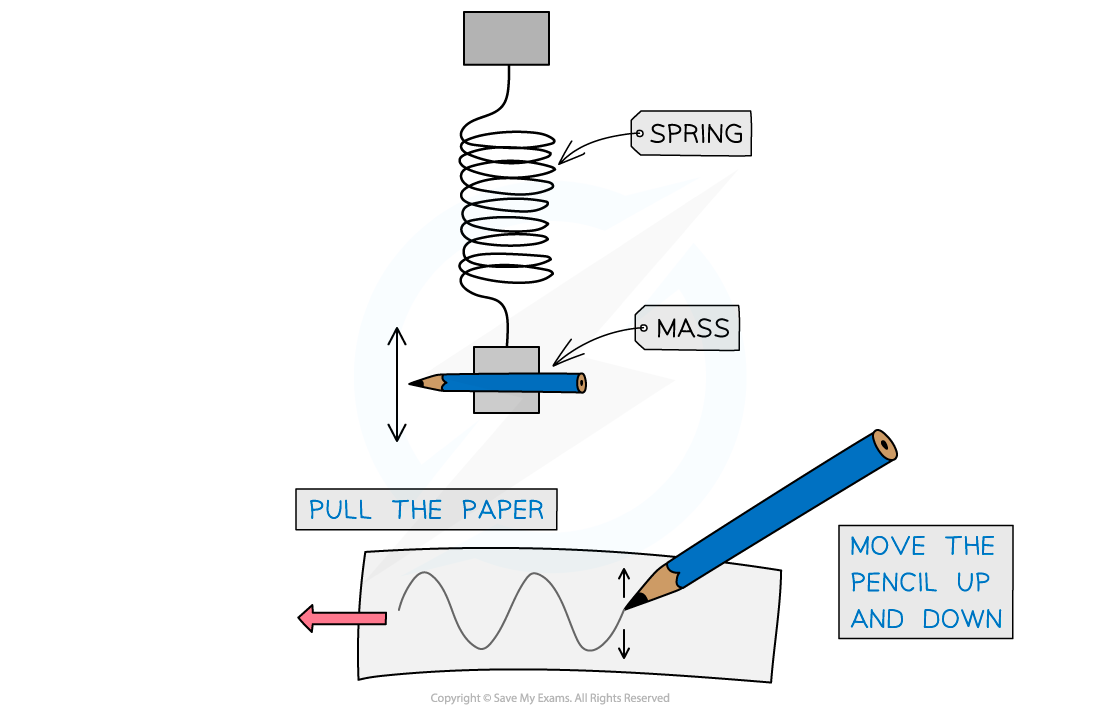Period of Simple Harmonic Oscillators (Edexcel International A Level (IAL) Physics) : Revision Note
Period of a simple pendulum
A simple pendulum is:
An object moving from side to side
Attached to a fixed point above
The time period of a simple pendulum can also be calculated using this equation:
T = 2π
Where:
l is the length of the pendulum swing
g is the strength of gravity on the planet on which the pendulum is set up
Worked Example
A child is sitting on a swing that is 200 cm long. What is the period of oscillation?
Answer:
Step 1: Convert length to meters
200 cm = 2 m
Step 2: Substitute the correct values
T = 2π= 2π
=2.84 s
Step 3: Confirm the answer
The time period of 1 oscillation of the swing is 2.84 s
Period of a Mass-Spring System
A mass-spring system means:
An object moving up and down
On the end of a spring

The equation for the restoring force in SHM F = - kx
is the same as the equation for Hooke's Law
The time period, T can be calculated using the equation:
T = 2π
Where:
m is the mass of the object on the end of the pendulum
k is the spring constant of the material the pendulum is made from
Observing the Motion of a Mass-Spring System
An experimental and graphical method can be used to observe the motion of a simple mass-spring system
Tie a pencil together with the mass and set the mass in free oscillations by displacing it downwards slightly
The oscillations will move the pencil up and down
On a piece of graph paper, allow the pencil to trace the path of the oscillations by pulling the paper sideways as the mass-spring system oscillates up and down
The oscillations will produce a curved, periodic graph
This will decrease in amplitude as the mass-spring system slows down

The motion of oscillator can be observed through a simple mass and spring system

You've read 0 of your 5 free revision notes this week
Sign up now. It’s free!
Did this page help you?
